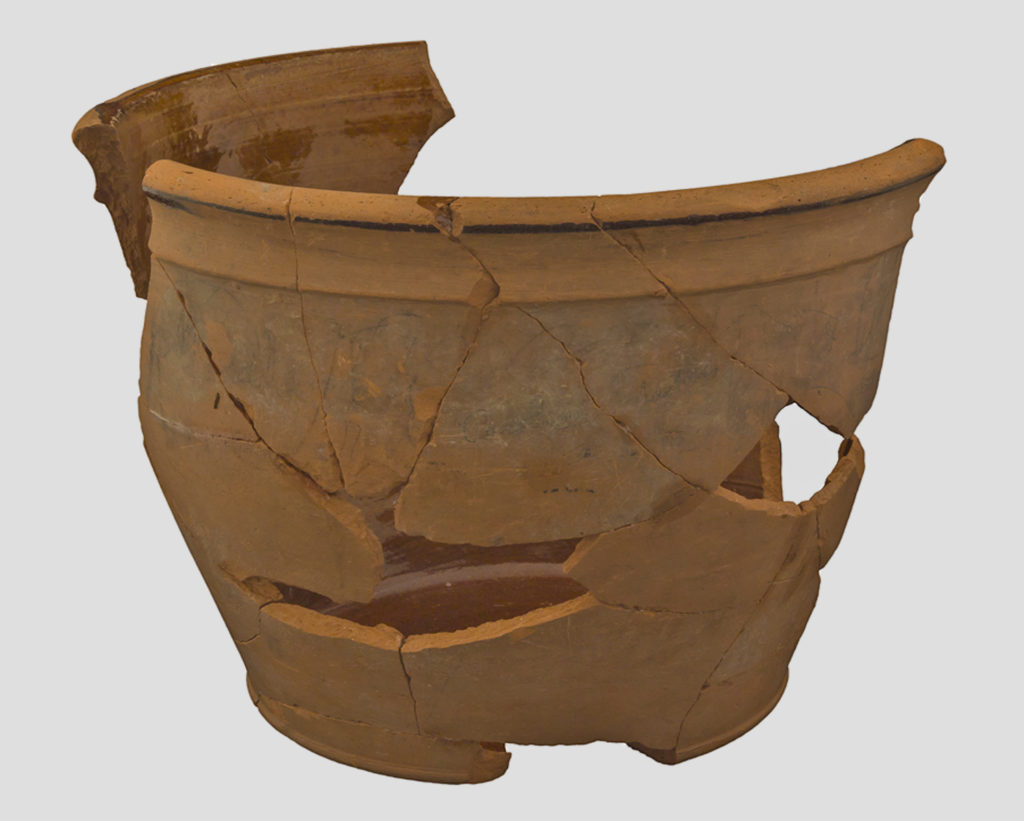Transfer Print

[distance1] According to Snyder (1997:9), “transfer printing allowed a potter to quickly duplicate a pattern by transferring it from an [engraved] copper plate to a ceramic vessel via a specially treated paper. Transfer printed patterns appealed to consumers as the process afforded them the opportunity to purchase complete sets of dishes that were virtually identical, a […]
Redware

[distance1] Also known as coarse red earthenware, redware demonstrates a heavy, thick, clay body that must be glazed (lead glaze) in order to be non-porous. In general, these utilitarian vessels were used in the kitchen and dairy for food preparation and storage. Although made in many different places, the fragility of the vessels (they were easily […]
Factory Slip: Banded

Banding, the application of bands of colored slip to a vessel, was a long-lived decorative technique in dipped earthenware. Bands of slip were added to the ceramics by trailing them with a slip bottle onto a vessel mounted horizontally on a turning lathe. These wares are sometimes referred to as “annular wares,” a collector’s […]









